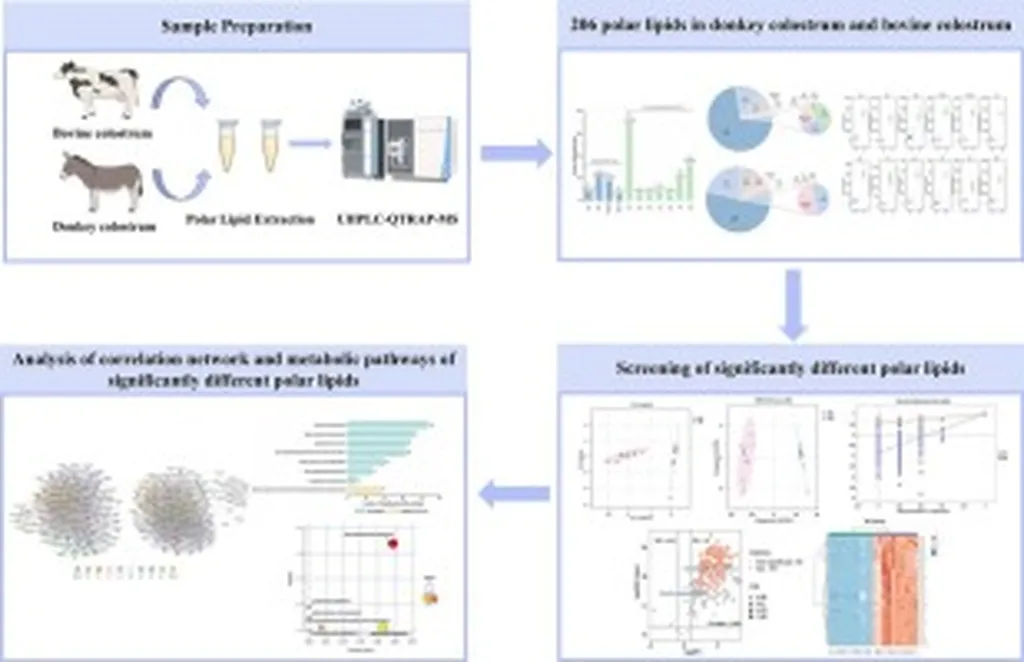In the realm of agricultural biotechnology, a recent study has shed new light on the distinct lipid profiles of donkey and bovine colostrum, offering insights that could revolutionize nutritional strategies and commercial applications. The research, led by Yumeng Zhang from the College of Food Science at Shenyang Agricultural University in China, was published in *Food Chemistry: X* (translated as *Food Chemistry: New Frontiers*).
Colostrum, the first milk produced by mammals after giving birth, is a powerhouse of nutrients and immune-boosting compounds. While bovine colostrum has been widely studied and utilized, donkey colostrum (DC) has garnered attention for its unique properties, particularly in regions where donkey milk is traditionally consumed. However, its extremely low lipid content, especially polar lipids, has posed challenges for its commercial exploitation.
Zhang and her team embarked on a comprehensive lipidomics study, characterizing 11 subclasses of 206 polar lipids in both DC and bovine colostrum (BC). Using stringent screening criteria, they identified 141 lipid species with significantly different polar lipids (SDPLs) between the two types of colostrum. “This is the first time such a detailed comparative analysis has been conducted,” Zhang noted, highlighting the novelty of their approach.
The study revealed six key lipid metabolic pathways, with glycerophospholipid metabolism emerging as the most critical. This pathway is crucial for cell membrane integrity and signaling, making it a vital component in nutritional strategies. The findings not only enhance our understanding of the polar lipid differences between DC and BC but also provide a theoretical basis for synergistic utilization of the two milk sources.
The commercial implications of this research are substantial. For instance, the food industry could leverage these insights to optimize the nutritional enrichment of donkey colostrum products, making them more competitive in the market. “By understanding the unique lipid profiles, we can develop targeted supplementation strategies,” Zhang explained, suggesting that the addition of specific lipids could enhance the nutritional value of DC products.
Moreover, the energy sector could benefit from this research. Polar lipids, particularly phospholipids, are known for their emulsifying properties and potential applications in biofuel production. The distinct lipid profiles identified in this study could pave the way for novel biofuel formulations, offering a sustainable and renewable energy source.
As the world grapples with the challenges of food security and sustainable energy, research like this underscores the importance of exploring diverse biological resources. The findings not only contribute to our scientific understanding but also open up new avenues for commercial and industrial applications. With further research and development, the synergistic utilization of donkey and bovine colostrum could become a cornerstone of future nutritional and energy strategies.

